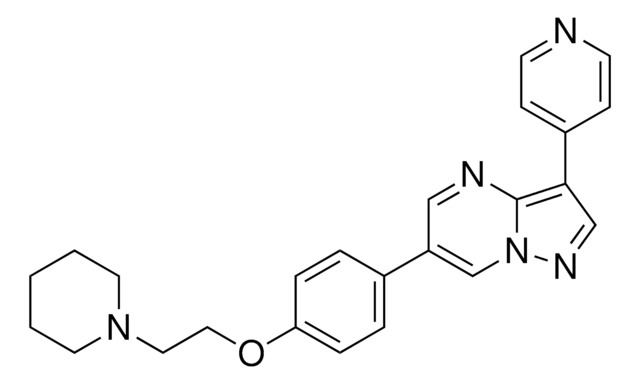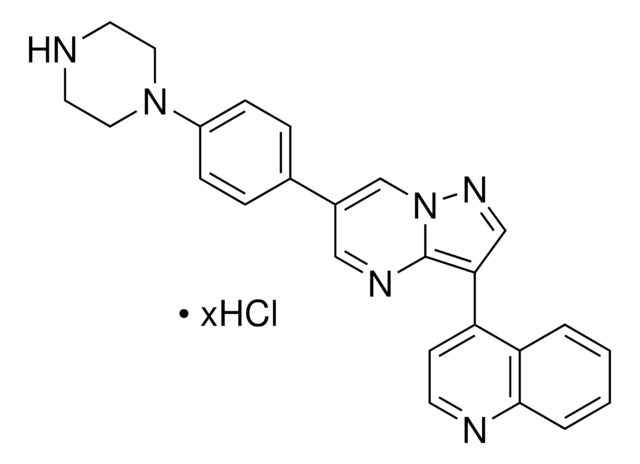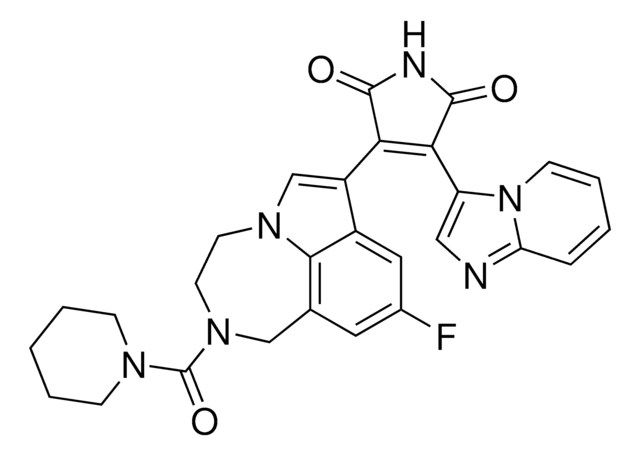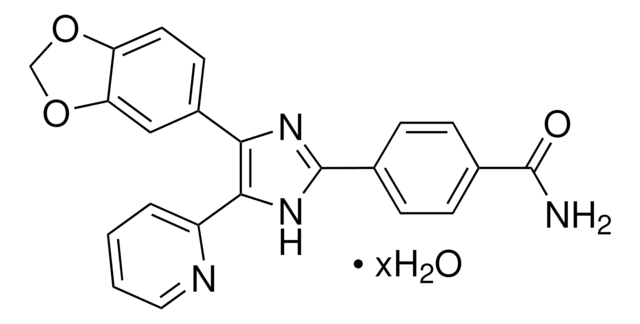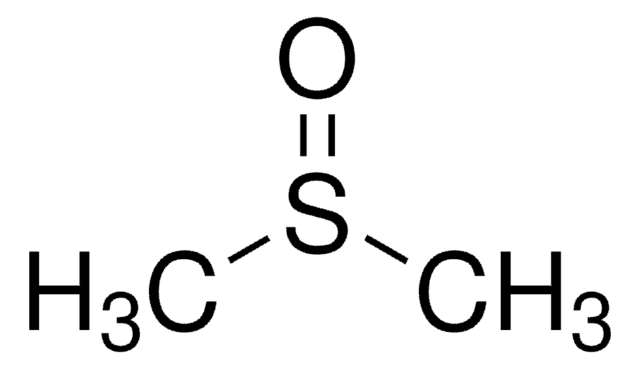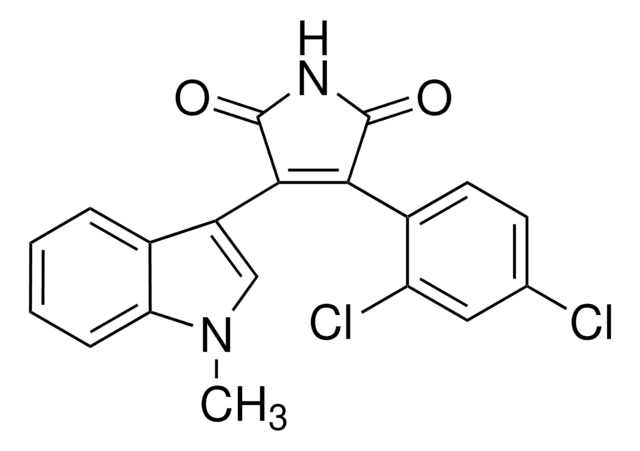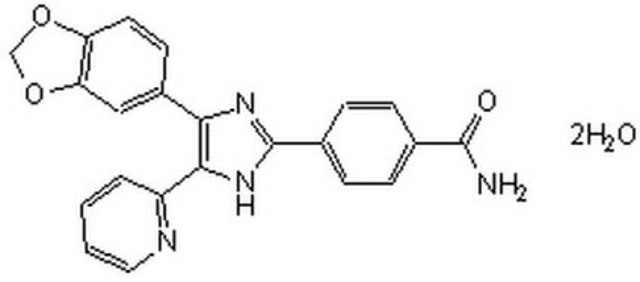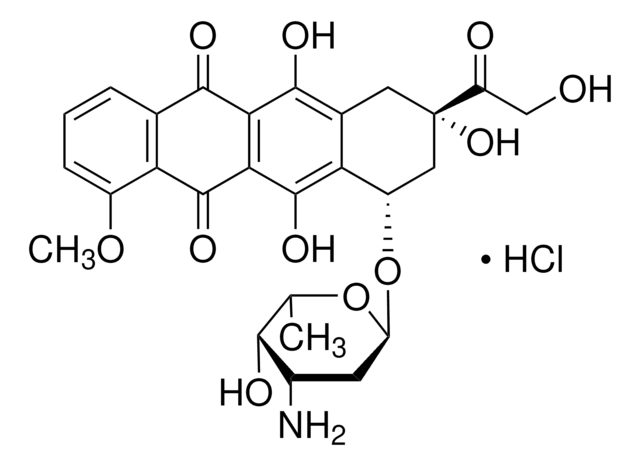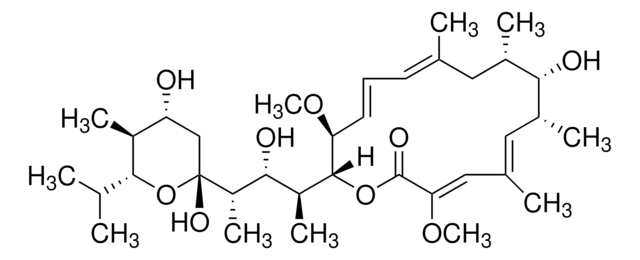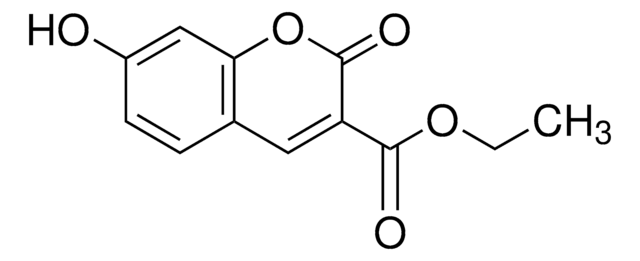推荐产品
质量水平
方案
≥98% (HPLC)
表单
powder
颜色
white to beige
溶解性
DMSO: 20 mg/mL, clear
储存温度
2-8°C
SMILES字符串
BrC1=CC(C2=CC(C3=CC(OCO4)=C4C=C3)=NN2)=CC=C1
InChI
1S/C16H11BrN2O2/c17-12-3-1-2-10(6-12)13-8-14(19-18-13)11-4-5-15-16(7-11)21-9-20-15/h1-8H,9H2,(H,18,19)
InChI key
RCQIIBJSUWYYFU-UHFFFAOYSA-N
生化/生理作用
Anle138b is a fluorescent inhibitor of α-synuclein and prion-protein (PrPSc) aggregation that reduces the progression of prion and Parkinson′s disease in animal models. Anle138b extends the survival of mice infected with prions. Anle138b strongly inhibits BSE-derived and human prions. The fluorescence strongly increases upon binding with α-synuclein fibrils. Apparently, Anie138b binds to hydrophobic pockets in the fibrils.
Anle138b, an oligomer modulator, inhibits neuronal degeneration. It rescues neurons from the aggregation effects of α-synuclein.
警示用语:
Warning
危险声明
危险分类
Eye Irrit. 2 - Skin Irrit. 2 - STOT SE 3
靶器官
Respiratory system
储存分类代码
11 - Combustible Solids
WGK
WGK 3
闪点(°F)
Not applicable
闪点(°C)
Not applicable
法规信息
新产品
从最新的版本中选择一种:
分析证书(COA)
Lot/Batch Number
Jens Wagner et al.
Acta neuropathologica, 125(6), 795-813 (2013-04-23)
In neurodegenerative diseases such as Alzheimer's disease (AD), Parkinson's disease (PD) and prion diseases, deposits of aggregated disease-specific proteins are found. Oligomeric aggregates are presumed to be the key neurotoxic agent. Here we describe the novel oligomer modulator anle138b [3-(1,3-benzodioxol-5-yl)-5-(3-bromophenyl)-1H-pyrazole]
Elisa Turriani et al.
Proceedings of the National Academy of Sciences of the United States of America, 114(25), E4971-E4977 (2017-06-07)
Recent epidemiological and clinical studies have reported a significantly increased risk for melanoma in people with Parkinson's disease. Because no evidence could be obtained that genetic factors are the reason for the association between these two diseases, we hypothesized that
我们的科学家团队拥有各种研究领域经验,包括生命科学、材料科学、化学合成、色谱、分析及许多其他领域.
联系技术服务部门